While mining operations in this coastal municipality continue to provide jobs, technical skills training, and a nationally recognized safety record, they also remain a source of recurring complaints from local residents—especially over blasting incidents and the environmental impact of operations near communities.
Nearby barangays continue to raise concerns about the effects of blasting, strong odors from the plant, and damage to crops and structures.
The mining and processing operations of Filminera Resources Corporation (FRC) and its partner, Phil. Gold Processing and Refining Corporation (PGPRC), have long shaped the economic and physical landscape of Aroroy. FRC manages the extraction of gold ore, while PGPRC oversees the processing at a facility located in Barangay Puro.
Their presence has led to the establishment of educational scholarships and TESDA-accredited skills training for young residents and displaced workers. But even as job creation and capacity-building efforts continue, community complaints have persisted—pointing to the complexities and contradictions in how mining is experienced locally.
Longstanding Complaints Over Blasting and Smell
Noelle Nazareno, superintendent of PGPRC’s Social Development and Management Program (SDMP), acknowledged that the company receives regular complaints. The most frequent issues are tied to Filminera’s blasting operations, which are part of its open-pit mining process.
In an interview, Nazareno said that both Filminera and PGPRC has set up a grievance mechanism and conducts regular monitoring of structures. “Quarterly ang monitoring sa nearby barangays. May mga barangay na weekly ang visits namin,” she said.
The company documents the structural conditions of nearby homes and buildings. If a blast leads to damage, communities are encouraged to file complaints through the barangay. “Ang usual talaga na nare-receive naming complaint ay ‘yung mga blasting at concerns sa pananim,” she added.
PGPRC, which operates the processing plant, has also received complaints about strong odors, particularly on days when the wind shifts toward residential areas. “Paminsan-minsan may amoy sa planta. We validate those complaints,” she said. In response, the company has occasionally distributed face masks.
Despite these recurring concerns, Nazareno said the company has not faced formal legal cases from affected residents. “Na-aappreciate namin ‘yung community kasi bumabalik sila dito. Hindi lang para magreklamo kundi para humingi ng tulong, scholarship, o medical assistance.”
Safety Standards Earn National Recognition
While environmental and community concerns persist, both Filminera and PGPRC have been commended by national agencies for occupational health and safety.
Farhan Ibrahim, safety superintendent for FRC, said that since 2018, the companies have recorded zero lost time injuries (LTI)—a metric that tracks workplace accidents resulting in missed workdays.
“Yung huli naming LTI, 2018 pa. Mula noon, wala na ulit,” Ibrahim said. “Kapag may nangyari ngayon tapos hindi nakapasok kinabukasan, LTI na agad ’yon. Magsa-zero ulit lahat ng bilang ng man hours.”
Both companies maintain a detailed risk register covering all departments. The health and safety management system applies not just to employees but also to contractors and visitors. More than 10 safety officers are assigned to Filminera alone.
Before deployment, all workers must undergo safety training—part of a broader policy to ensure both safety and productivity. Even visitors go through orientations.
This commitment has earned them Gawad Kaligtasan at Kalusugan (GKK) awards from the Department of Labor and Employment (DOLE).
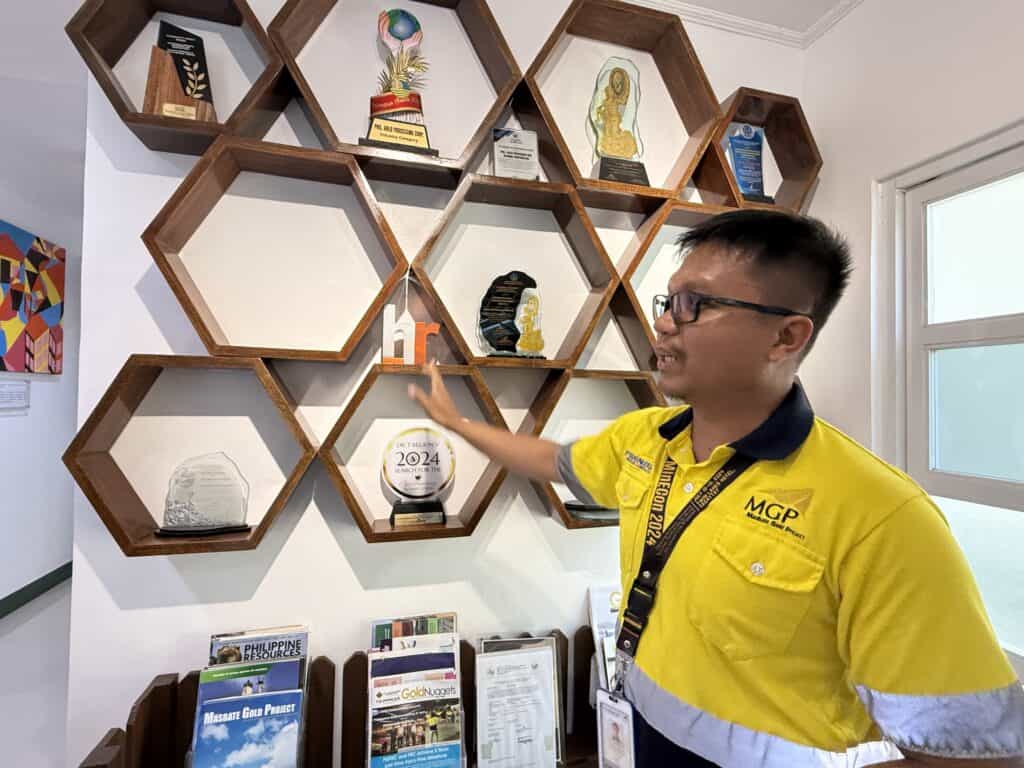

Environmental Measures and Progressive Rehabilitation
As Filminera continues its gold mining operations in Aroroy, its environmental superintendent insists that the company has implemented engineering and rehabilitation measures to minimize risks such as landslides, siltation, and contamination—issues commonly raised by critics of large-scale mining.
“There’s no major erosion,” said Maureen Bien, Filminera’s Environmental Superintendent. “We monitor it closely using erosion pegs and engineering standards. Even during Typhoon Tisoy in 2019—the strongest to hit Masbate in recent years—there were no major landslides.”
Filminera uses compacted layers, cross drains, and racked drainage systems to guide runoff toward siltation and sedimentation ponds designed to trap sediments before discharge into rivers.
Dumping and site development began in 2016, with progressive rehabilitation implemented since 2017. “You can see the rehabilitation at the bottom of the site while dumping continues at the top,” Bien explained.
Revegetation efforts transitioned from fast-growing species like mahogany and gmelina to indigenous trees and bamboo, especially in river-adjacent areas, following DENR recommendations. The company is also piloting agroforestry on rehabilitated land, in partnership with Dr. Emilio B. Espinosa Sr. Memorial State College of Agriculture and Technology (DEBESMSCAT).
“Palm and fruit trees are now being tested,” Bien said. “Palm is low maintenance, and fruit trees offer communities a livelihood without encouraging logging.”
Water discharge from the processing plant is monitored twice daily for cyanide and monthly for heavy metals. “Since operations began in 2014, our water quality has remained within allowable standards,” Bien said. A designated mixing zone at sea, required by its environmental compliance certificate, helps ensure marine safety.
In Port Barrera, the company has planted 31 mangrove species, including endangered ones like Gapas-Gapas, in collaboration with Bongsanglay Natural Park.
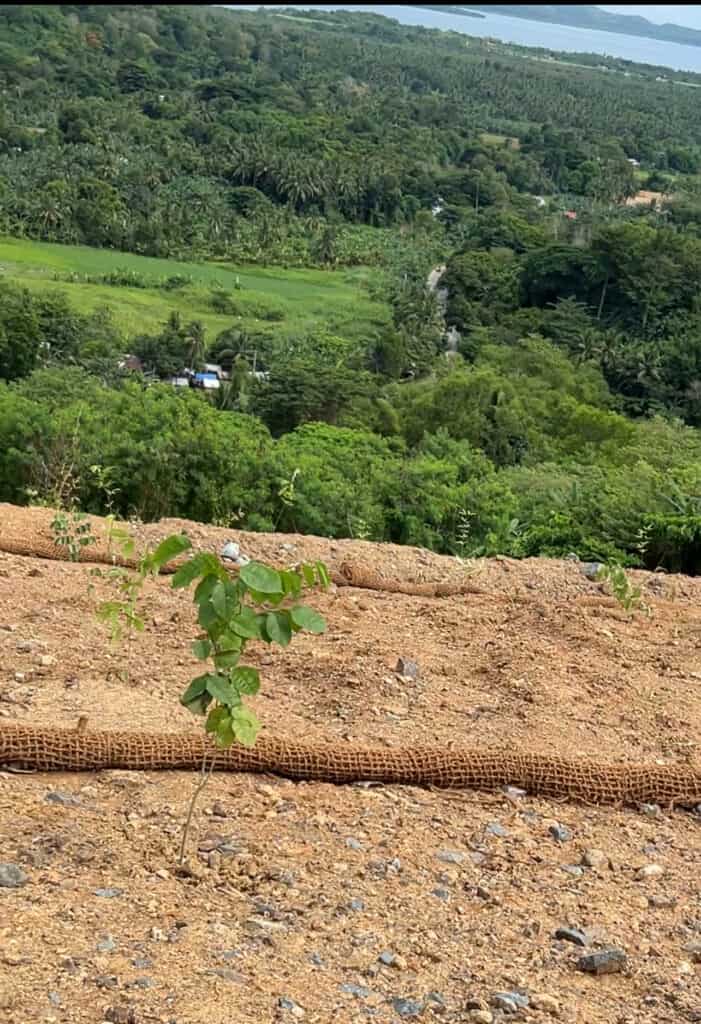
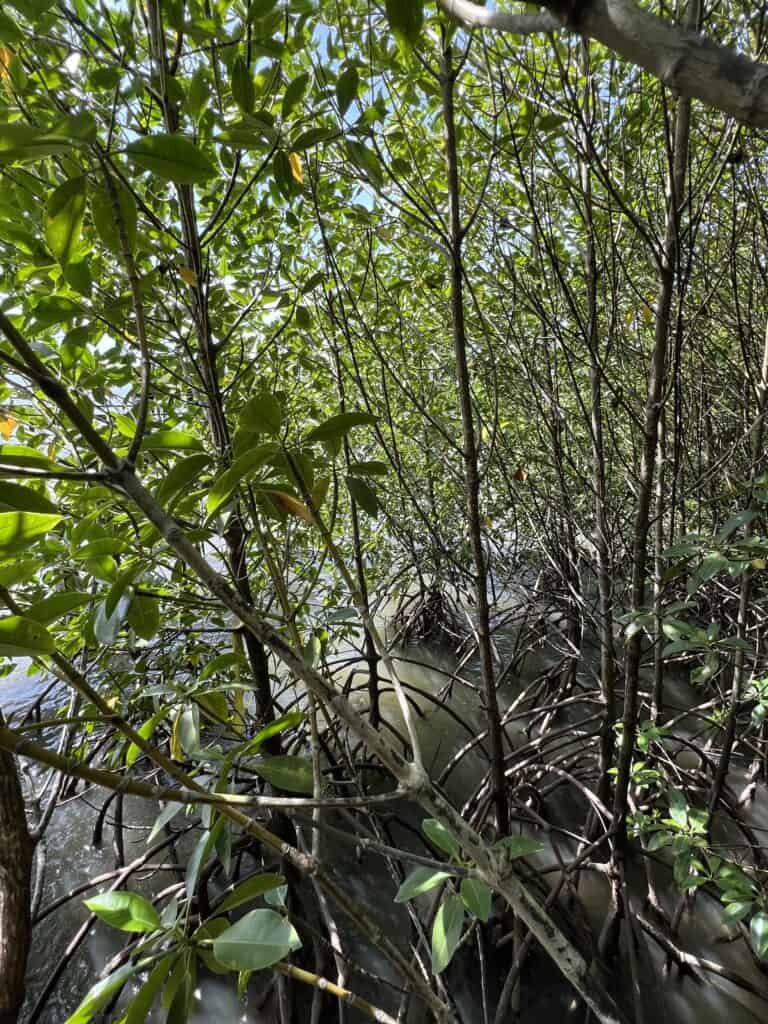
Expert Perspective: Understanding the Mining Life Cycle
For Engr. Victor M. Florece, a registered metallurgical engineer and chairperson of the BS Mining Engineering program at Bicol University, the key to understanding mining’s impact is recognizing it as a life cycle—from exploration to extraction, rehabilitation, and closure.
“Mining is temporary. It has a beginning and an end. What’s crucial is how companies and communities plan for that entire cycle,” Florece said.
He noted that mining in the Philippines took a major step forward with the passage of Republic Act 7942, or the Philippine Mining Act of 1995. Prior to this law, many large-scale mining operations lacked proper environmental safeguards.
“Before 1995, it was common to dump tailings into rivers or even the sea,” he recalled. “There were no tailings storage facilities (TSFs). It was all unregulated—‘bara-bara’ as we say. That caused long-term damage to ecosystems and farmland.”
He emphasized that responsible mining is defined not only by regulatory compliance but by genuine engagement with host communities and long-term land use planning. Companies must undertake progressive rehabilitation, wherein disturbed areas are restored even before mine closure.
Florece acknowledged that blasting and dust are inherent impacts of open-pit mining but said these should be identified and mitigated through the Environmental Impact Assessment (EIA) process. He also cited programs such as the Mining Forest Program and the SDMP as part of the government’s framework to promote shared benefits and ecological balance.
Modern technologies, he added, have significantly reduced the risks.
“Before, they used dynamite or ammonium nitrate manually. Now, it’s remote-controlled blasting, monitored via computers. It’s faster, safer, and more precise.”
He added that companies typically schedule and cascade blasting activities to communities. Blasts last only a few seconds and usually register mild tremors, comparable to Intensity III earthquakes.
Skills Training for Youth and Displaced Workers
Beyond direct employment at the mine or processing plant, Filminera and PGPRC support access to technical training through the MGP-Eight Impact Barangays Training Center, in partnership with the Aroroy local government.
The center offers TESDA-accredited courses such as Shielded Metal Arc Welding, Scaffolding, and Electronic Products Assembly and Servicing (EPAS).
“After mining, dapat may alternatibong kabuhayan ang mga tao,” said center chairman Melecio Recto. Many graduates have since found employment both within and outside Aroroy—some at other mining sites, others in small enterprises.
Anna May Gaciles Vargas, 25, from Barangay Amoroy, is one of the early scholars of the center’s EPAS program.
“Namatay ang papa ko noong seven years old ako. Kaya parang sinabihan ko na lang sarili ko na ako yung tutulong sa pamilya namin,” she shared.
Her training helped her family start a piggery. Now, she’s training to become a full-time TESDA-accredited instructor. “Ngayon, binibigyan na kami ng pang-permanent na trabaho bilang trainers. Kahit paalisin ng Filminera, may TESDA accreditation kami. May trabaho kami kahit saan,” she explained.
Vargas acknowledged criticisms of mining but said she’s witnessed rehabilitation efforts firsthand. “Naranasan namin yung blasting, oo. Pero nakita din namin kung paano nila ni-rehab yung mga lugar. Hindi nila iniwan na ganun lang.”
Irish Bien, a food tech graduate from Barangay Puro, is among the 25 current trainees in welding.
“Excited ako kasi bihira ‘yung babae sa welding,” she said, adding that her goal is to work abroad.
Edmarie Merdegia, PGPRC’s community development organizer, said the training program has expanded across Masbate.
“We are also working with local governments to prepare residents for opportunities after mining,” she said.
Training a single electronics trainee can cost between Php 55,000 to Php 60,000, with total batch costs exceeding Php 400,000.
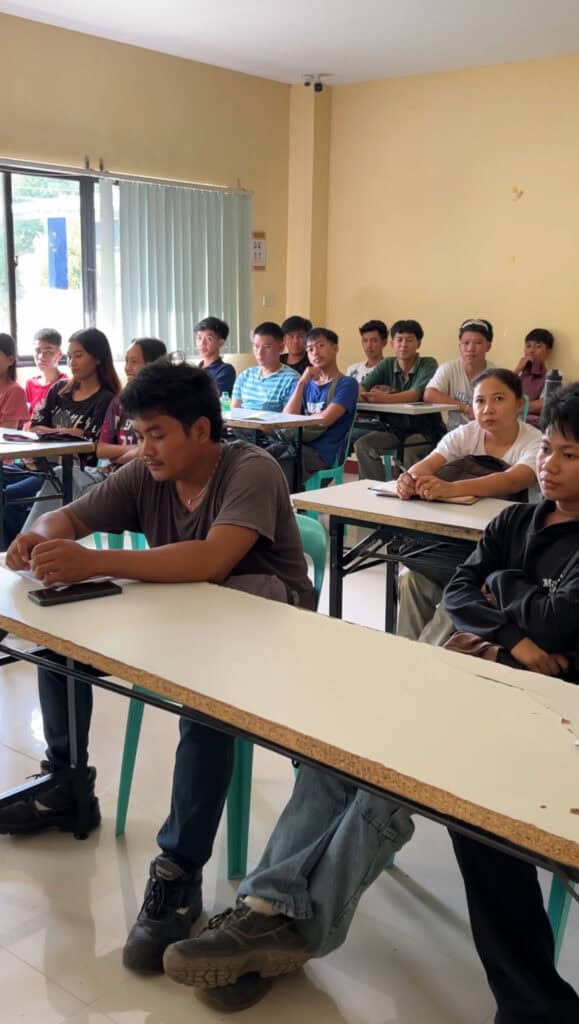
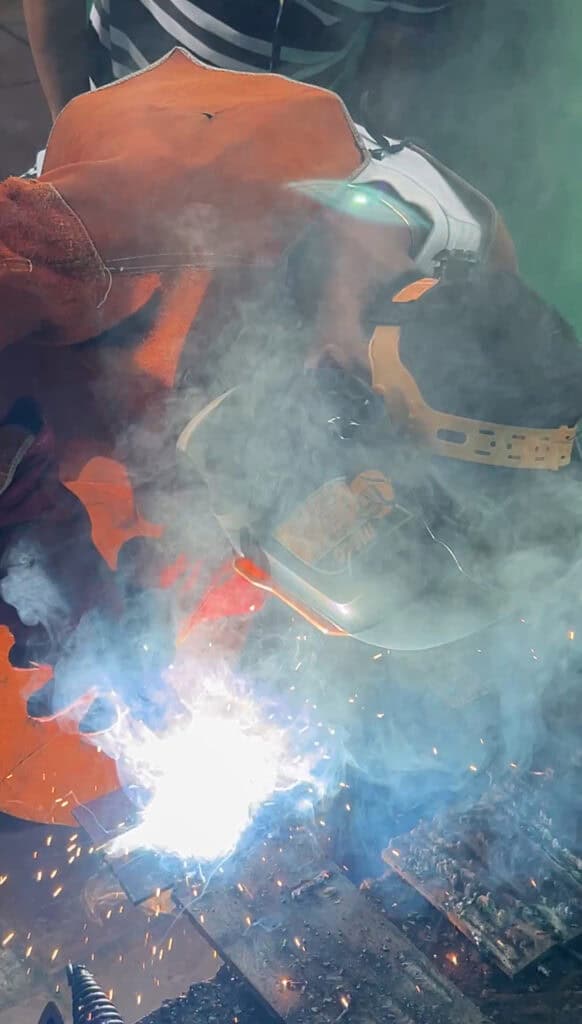
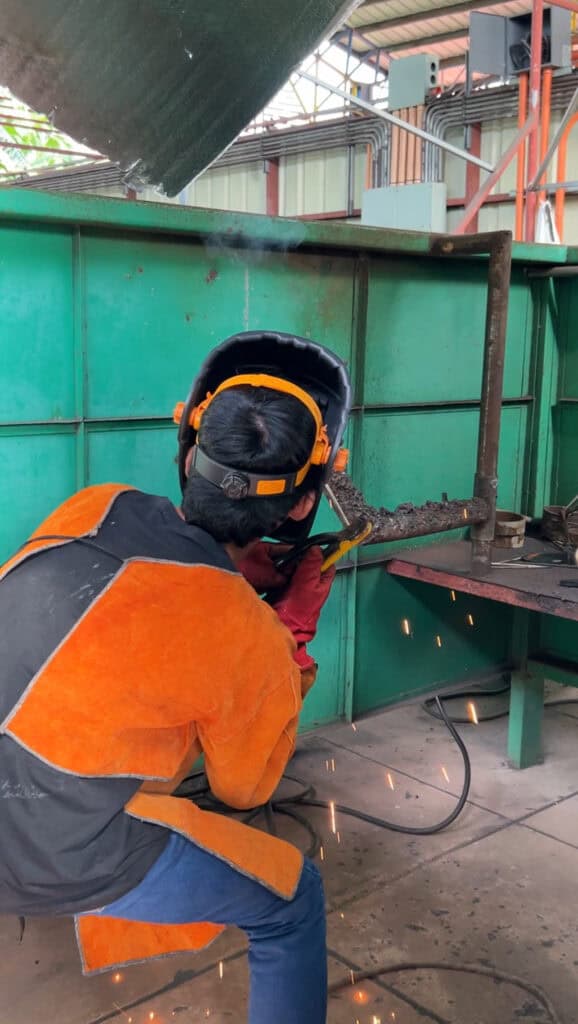
A Balancing Act
The contrast between national safety awards and persistent community complaints reflects the complex reality of mining—where economic opportunities and grievances exist side by side.
For Engineer Florece, the way forward is not to reject mining entirely but to strengthen its accountability.
“We need mining. We need metals, we need energy resources, we need cement and steel to build roads, homes, and bridges. But that doesn’t mean we extract at all costs,” he said. “It must be done responsibly, with a clear commitment to rehabilitation, safety, and long-term community development.”
